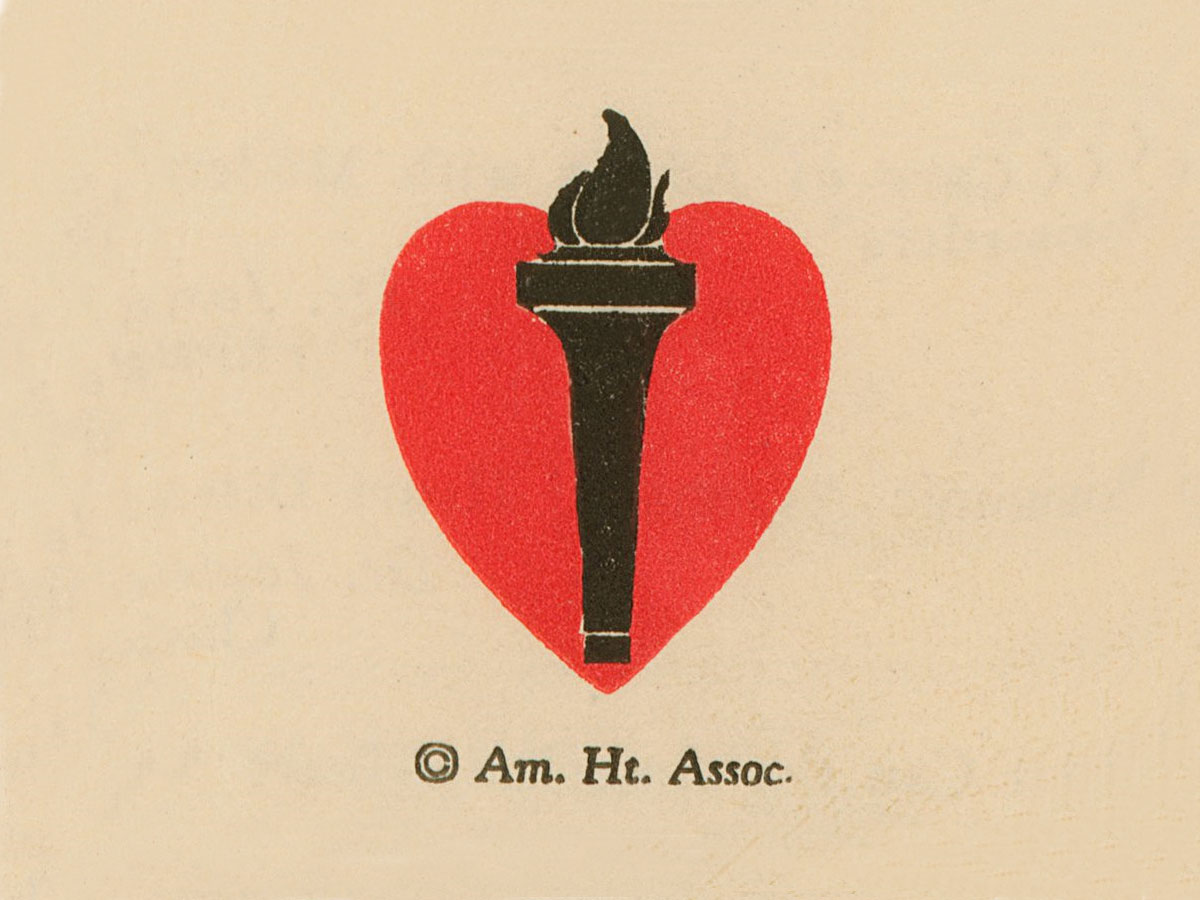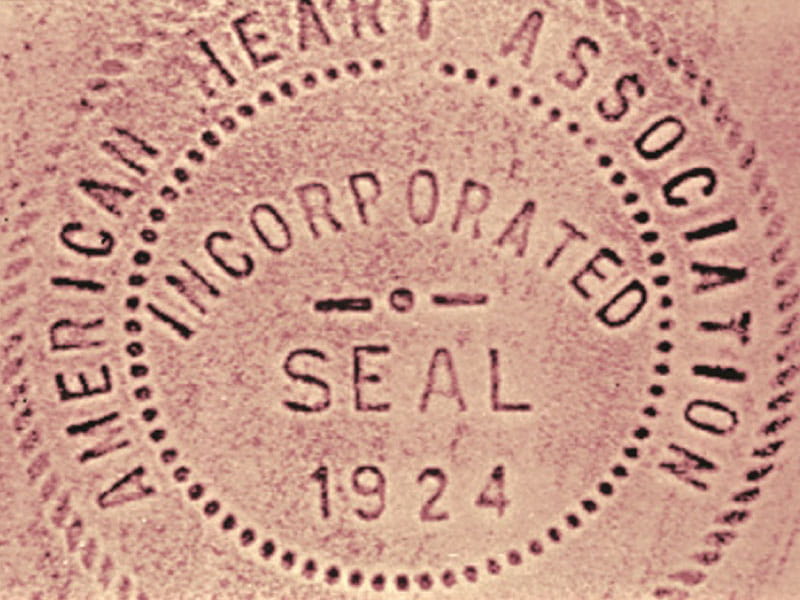Our Lifesaving History

But a handful of pioneering physicians and social workers believed it didn’t have to be that way. They conducted studies to learn more about heart disease, America’s No. 1 killer. Then, on June 10, 1924, they met in Chicago to form the American Heart Association — believing that scientific research could lead the way to better treatment, prevention and ultimately a cure. The early American Heart Association enlisted help from hundreds, then thousands, of physicians and scientists.
“We were living in a time of almost unbelievable ignorance about heart disease,” said Paul Dudley White, one of six cardiologists who founded the organization.
In 1948, the association reorganized, transforming from a professional scientific society to a nationwide voluntary health organization composed of science and lay volunteers and supported by professional staff.
Since then, the AHA has grown rapidly in size and influence — nationally and internationally — into an organization of more than 35 million volunteers and supporters dedicated to improving heart health and reducing deaths from cardiovascular diseases and stroke.
Here is a timeline of American Heart Association milestones in more than a century of lifesaving history:
Our Early History
1915
Looking for Answers: Nearly a decade before the formal creation of the American Heart Association, physicians and social workers convene to find more answers about the mysteries of heart disease.
1924
American Heart Association is Founded: Six cardiologists form the American Heart Association as a professional society for doctors. One of the founders, Dr. Paul Dudley White, described the early years as a time of “almost unbelievable ignorance” about heart disease.
1925
Scientific Sessions Begins: The AHA holds its first Scientific Sessions meeting where scientists and healthcare professionals learn the latest developments. The meeting, held every year since except for during World War II, grows to become the largest annual cardiovascular meeting in the United States and a leading international destination for the cardiovascular health community.
1947
Heart Week Kicks Off: First public campaign kicks off in February to celebrate National Heart Week.
1948
The AHA Reorganizes: The AHA reorganizes, transforming from a scientific society to a voluntary health organization composed of volunteers and supported by professional staff. Support for the AHA’s mission becomes much more visible, with fundraising activities taking hold in communities and businesses.
First Research Grant Awarded: The association awards its first research grant, to Nobel Prize winner Dr. Albert Szent-Gyorgyi. The grant helped fund studies about the energy that muscles, such as the heart, need to contract. In all, the AHA has funded 15 Nobel Prize winners, including 10 whose AHA-funded work led to the Nobel Prize.
Life-changing Breakthroughs
1956
Steady Hearts: An external defibrillator successfully returns a quivering heart back to a steady rhythm for the first time in humans. Dr. Paul Zoll leads the study, with funding from the AHA.
1957
First Pacemaker Implanted: The first battery-operated, wearable pacemaker is implanted in a patient. The research leading to this discovery, pioneered by Dr. William Weirich and funded by the AHA, led to the development of the fully implanted pacemakers used today.
1960
Implantable Pacemakers Make Way: The first successful surgeries for completely implantable pacemakers are reported by Dr. William Chardack, who received funding from the AHA. Production of implantable pacemakers quickly gets underway.
The Beginning of Artificial Heart Valve Replacements: The first successful artificial heart valve replacement is performed by Dr. Albert Starr, who received support from the AHA to develop the mechanical heart valve with hydraulic engineer Lowell Edwards. The Starr-Edwards valve is still used today, along with other artificial heart valves, improving countless lives.
1961
AHA-Funded Research and CPR: AHA-funded research from Drs. William Kouwenhoven, James Jude and Guy Knickerbocker show how CPR can save lives after cardiac arrest. Their research is reported in the Journal of the American Medical Association. We now know that effective bystander CPR can double or triple chances of survival.
Pioneering Microsurgery: Dr. Julius Jacobson performs surgery with the aid of a microscope. He becomes a pioneer in microsurgery with AHA funding. Microsurgery leads to advances in coronary artery surgery, neurosurgery and numerous other procedures.
Recent Achievements
2008
Research Shows Breaths Not Required for CPR: With funding from the AHA, Dr. Gordon Ewy shows uninterrupted, high-quality chest compressions — without mouth-to-mouth respiration — are important for keeping blood circulating to vital organs. As a result, the AHA releases new recommendations that say bystanders can skip mouth-to-mouth and use Hands-Only CPR to help an adult who suddenly collapses.
AHA Issues Statement on Hands-Only CPR: The AHA releases a statement about Hands-Only CPR, saying that bystanders who witness the sudden collapse of an adult should dial 911 and provide high-quality chest compressions by pushing hard and fast in the middle of the victim’s chest. This is a departure from traditional CPR that requires rescue breaths.
Nobel Prize Awarded to Early AHA-Funded Researcher: Dr. Martin Chalfie wins the 2008 Nobel Prize in Chemistry for developing green fluorescent protein as a genetic tag to see inside living cells, including heart cells, to better understand how the cells are made and how they work. The AHA funded Chalfie earlier in his career.
2009
AHA Advocacy Efforts Help Lead to Tobacco Oversight: The AHA helps lead the way in the passage of the Family Smoking Prevention and Tobacco Control Act. The law lets the FDA regulate tobacco, bans candy-flavored cigarettes and adds large warning labels to tobacco products. Billboard advertising near schools is banned, and tobacco companies can no longer alter their products to make them more addictive or to make misleading health claims.
2010
2020 Impact Goal Announced: The AHA announces a major goal to improve the cardiovascular health of all Americans by 20 percent while reducing deaths from cardiovascular disease and stroke by 20 percent by 2020. Prevention is a major focus of the 2020 Impact Goal.
2014
AHA Leads Heart Disease and Stroke Research Funding: After 65 years of funding research, AHA’s investment in heart disease and stroke research totals more than $3.5 billion. The AHA is the leading funder of heart disease and stroke research outside the federal government.
2016
One Brave Idea: The AHA establishes One Brave Idea, an unprecedented research initiative awarding $75 million to one team focused on curing heart disease. It’s funded through an alliance of the AHA, Verily and AstraZeneca.
AHA Institute for Precision Cardiovascular Medicine: Through the institute, the AHA provides funding for researchers focused on mining massive volumes of data in their quest to solve a range of heart disease issues. The institute began collecting, linking and leveraging patients’ data to help improve heart health.
2018
Resuscitation Quality Improvement Partners: The AHA and Laerdal Medical establish RQI Partners as a legal, joint venture — a big step toward realizing our bold vision of a world where no one dies from cardiac arrest. The for-profit subsidiary partnership focuses on the Resuscitation Quality Improvement® program, the HeartCode® portfolio and solutions being co-developed with the Resuscitation Academy Foundation.
2019
AHA Grantee wins Nobel Prize: Gregg L. Semenza, M.D., Ph.D., of Johns Hopkins University was co-awarded the 2019 Nobel Prize in Physiology or Medicine for discovery of how cells sense and acclimate to oxygen availability, the mechanism for one of life’s most essential adaptive processes. He shares the prize with William G. Kaelin Jr., M.D., of the Dana-Farber Cancer Institute, Boston and Sir Peter J. Ratcliffe, M.D., of the University of Oxford, England, and Francis Crick Institute in London. Their collaborative work established the basis for understanding how oxygen levels affect cellular metabolism and physiological function, paving the way for promising new strategies to fight cardiovascular disease and many other acute and chronic conditions, including anemia and cancer. Dr. Semenza has received five AHA research grants. The Association’s support of his now Nobel Prize winning work on HIF-1 began in 1993.
